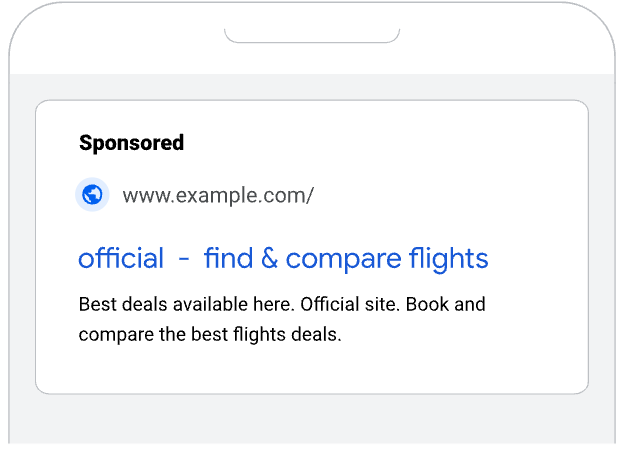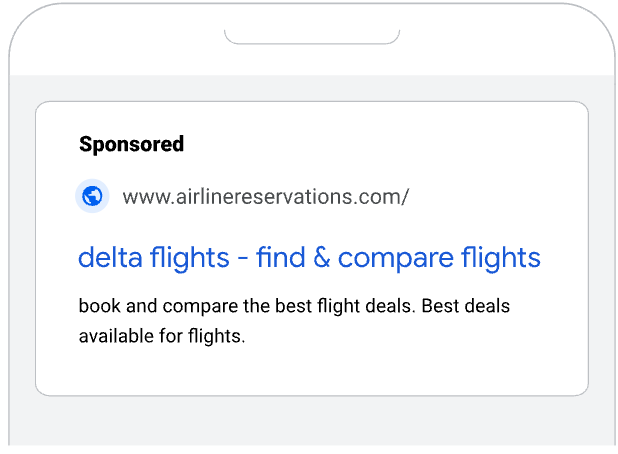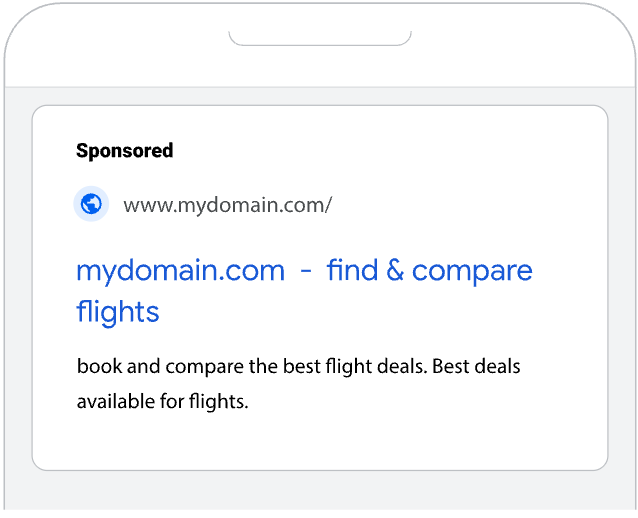Inside Google’s 2025 Policy Shift: Limited Ads Serving Killing Travel Ads
In 2025, two quiet policy levers—Unacceptable Business Practices (suspend-on-detect) and the newer Limited ad serving regime—are throttling travel advertisers, especially flight booking, changes, and cancellations. Below, we decode the official policies, show real cases, and share AdShot Media’s battle-tested recovery playbook. Key sources (open in new tab): Unacceptable business practices, Limited ad serving, Advertiser verification.
What changed in 2025 (and why you’re feeling it)
- Unacceptable Business Practices (UBP): zero-tolerance; Google may suspend “upon detection and without prior warning.” Travel intermediaries are at higher risk if signals imply airline affiliation, hide fees, or overpromise refunds.
- Limited ad serving (LAS): impression-limiting for “unqualified advertisers” in abuse-prone scenarios. It’s not a classic violation—but it crushes reach until trust signals improve.
Translation for travel: even legitimate agencies can be throttled or suspended if your signals resemble risky patterns (opaque disclosures, unclear airline affiliation, aggressive refund claims, unverified phone lines, etc.).
Timeline — Policy Pressure on Travel Ads (2023 → 2025)
Decode the policies (plain English)
1) Unacceptable Business Practices (UBP)
- Google can review your ads, site, accounts, and third-party sources; if UBP is found, accounts may be suspended immediately with no prior warning.
- Common travel triggers: implying airline affiliation, hiding fees, promising refunds you don’t control, or presenting phone-assist as the airline itself.
2) Limited ad serving (LAS)
- Ads from “unqualified advertisers” get impression limits in scenarios with high abuse risk or poor UX; signals include user feedback, prevalence of abuse, and industry trends.
- Not a formal “violation,” but it crushes reach until trust signals (verification, disclosures) improve.
Related maintenance: destination/phone checks are extended to message assets and stricter phone hygiene in 2025.
Bookmark these and keep them updated in your internal SOP.
Real cases (2024–2025): what travel advertisers actually report
UBP suspension notices
- 2025: “Your account was suspended for UBP” — travel advertisers report no prior issues; appeals required.
- 2024–2025: Airline/flight-related businesses disputing policy breach; most resolved after identity, disclosures, and phone verification fixes.
- Community & Reddit threads: Instant UBP despite approved assets; resolution via policy-mapped appeals.
Pattern: UBP often triggers from overall trust signals (brand/entity verification, disclosure quality, phone assets, refund language)—not just ad text.
Limited ad serving (LAS) pain
- Impression drops >50% even after basic clean-up; LAS is “not appealable” like a normal disapproval.
- Whole accounts affected; advertisers confused about removal timelines. Solution: qualify the business and build trust signals.
Advice from product experts: complete Advertiser verification, upgrade disclosures, clarify brand/entity identity across assets.
Travel Ads: Compliant vs. Risky (Side-by-Side)
| Area | Compliant (Safe) | Risky (Triggers UBP / LAS) |
|---|---|---|
| Airline Affiliation | “We’re a travel agency, not the airline.” Clear header & footer disclosure. Support line labeled “Agency Support.” | Implying airline/airport affiliation; using airline logos without license; “Official Airline Support.” |
| Refunds & Changes | States exact role: “We assist with airline-provided changes/refunds; final decisions by the carrier.” | Guaranteeing refunds/compensation you don’t control; vague “instant confirmation” claims. |
| Phone Assets | Verified number; hours; call recording notice; Advertiser verification complete. | Unverified/forwarded numbers; “airline desk” phrasing; mismatched country codes; LAS often applies. |
| Pricing Transparency | Shows fees, taxes, service charges up-front with sample fare breakdown. | Hidden fees; bait-and-switch pricing; hard-to-find service fee details. |
| Landing Page | Real company, address, T&Cs, privacy, about page, complaint channel. | Thin page, no legal pages, no business identity, masked domains, misleading logos. |
UBP is about trust & transparency. LAS throttles exposure where abuse risk is high.
Why Google Limits Certain Travel Advertisers (Even Without a Policy Violation)
Google’s Limited Ad Serving system protects the integrity of the ads ecosystem by restricting impressions for advertisers who haven’t yet proven trustworthiness. These are not disapprovals — but *temporary limits* placed on unverified or new advertisers to prevent misleading or confusing ad experiences, especially in sensitive industries like travel, finance, and customer service.
Flow: New advertiser → Unverified or generic ads → Limited ad serving → Verified and qualified advertiser.
How Google Determines “Qualification”
- Account maturity: Older accounts with steady compliance histories earn trust faster.
- Identity verification: Verified advertiser info, address, and phone alignment reduce risk.
- User feedback: Ads with positive engagement and low complaint ratios gain credibility.
- Policy compliance: No UBP flags or repetitive disapprovals across assets.
- Transparent brand signals: Clear domain, about page, and consistent business name.
Official Google Examples & Best Practices (2025 Update)
These examples come directly from Google’s Limited Ad Serving and Unacceptable Business Practices pages. They illustrate how ads can appear misleading—or compliant—based on how you identify your brand, mention other brands, and use ad assets.
Example 1: When a Generic Ad May Be Unclear

Google highlights that unbranded ads can confuse users—especially those searching for specific airlines or official websites. When users encounter third-party ads that don't clearly identify the advertiser, it can trigger Limited Ad Serving.
Example 2: Referencing Another Brand (Without Clear Relationship)

According to Google, using another brand’s name, likeness, or logo—especially in industries like travel or customer service—can mislead users if your business isn’t officially affiliated. For example, ads like “Delta Flights – Find & Compare Tickets” without disclosure may violate Unacceptable Business Practices.
Example 3: Best Practice – Pin Your Domain to the Front of the Ad Title

Google recommends pinning your domain name to the first headline position in responsive search ads. This makes your brand instantly recognizable, especially for new advertisers or lesser-known agencies. Here’s the step-by-step process within Google Ads:
- Open the Google Ads interface and create/edit a Responsive Search Ad.
- Locate your domain headline field and click the 📌 Pin icon.
- Select “Show only in position 1.”
- Click Save to lock your domain at the front of every ad variation.
Suspension Risk Meter
Where does your current setup sit? Use this as a heuristic before launch.
Needle shows “upper-medium.” Push left by completing verification, disclosures, and brand identity work.
Top 7 Risk Reducers (Quick Wins)
- Finish Advertiser verification and keep entity info consistent across site, ads, and profiles.
- Add a “We are a travel agency” disclosure in header & footer. Never imply airline affiliation.
- Publish a Fees & Refunds page—explain your scope vs. airline control; link it from ads.
- Use verified phone numbers; state hours, call notice; align location extensions.
- Show physical address, About/Team, complaint channel; add airline trademark usage statement.
- Remove “official/guaranteed/instant” language; write precise, verifiable claims.
- Start with brand-safe routes & exact match; expand as CTR and user feedback improve (to lift LAS).
Observed suspension & limitation hotspots (Travel)
Composite from 2024–2025 forum patterns and enforcement notes.
Why phone assets matter now
Phone numbers are a strong proxy for who you are. Unverified forwarding, mismatched country codes, or “airline desk” phrasing erode trust. With LAS, Google limits whole accounts in industries with abuse history. Destination & asset checks also expanded to message assets in 2025.
Pre-Launch Checklist for Flight Booking / Changes / Cancellations
- Business name, address, registration, and contact shown site-wide
- About & Team page with real photos/LinkedIn
- Airline trademark usage statement (if applicable)
- Header/hero strip: “We are a travel agency / intermediary”
- Fees & Refunds page with examples and limits
- Phone policy: hours, call recording notice, complaint link
- Finish Advertiser verification
- Domain alignment with business docs
- Consistent NAP (name/address/phone) across assets
Cross-check these before scaling budgets; it reduces UBP risk and helps lift LAS throttles.
Deeper reading & our related resources
Case Study: 12-Hour Recovery — Flight Change Campaign
Context: U.S. agency running “flight change & cancellation” call ads sees instant UBP suspension.
- Findings: Headline tone implied official airline support; phone asset unverified; fees unclear.
- Actions: We implemented disclosures (“We are a travel agency”), rewrote ad copy, verified phone, added “Fees & Refunds” page, and filed an appeal mapping each fix to policy language.
- Outcome: Account reinstated in ~12 hours; LAS lifted over the following week as trust signals stabilized.
How AdShot Media Recovers Suspended Travel Accounts (Step-by-Step)
- Evidence Sweep: Export policies, disapprovals, change history, ad previews; crawl & screenshot site.
- Trust Audit (2 hrs): Brand/entity consistency, address/phone/registration, About & Team, complaint route, privacy/T&Cs.
- Disclosure Retrofit: Header/hero strip (“We are a travel agency”), footer repeat, fees page, refund scope statement.
- Phone & Asset Hygiene: Verify number(s), state hours, call notice; align location extensions; clean sitelinks.
- Copy/Creative Rewrite: Remove “official/guaranteed/instant” language; include agency identity in headlines/paths.
- Appeal Dossier: Map each fix to UBP clauses with screenshots; cite verification completion and new pages.
- LAS De-throttle Plan: Relaunch with conservative budgets & exact match; expand as CTR/feedback improves.
